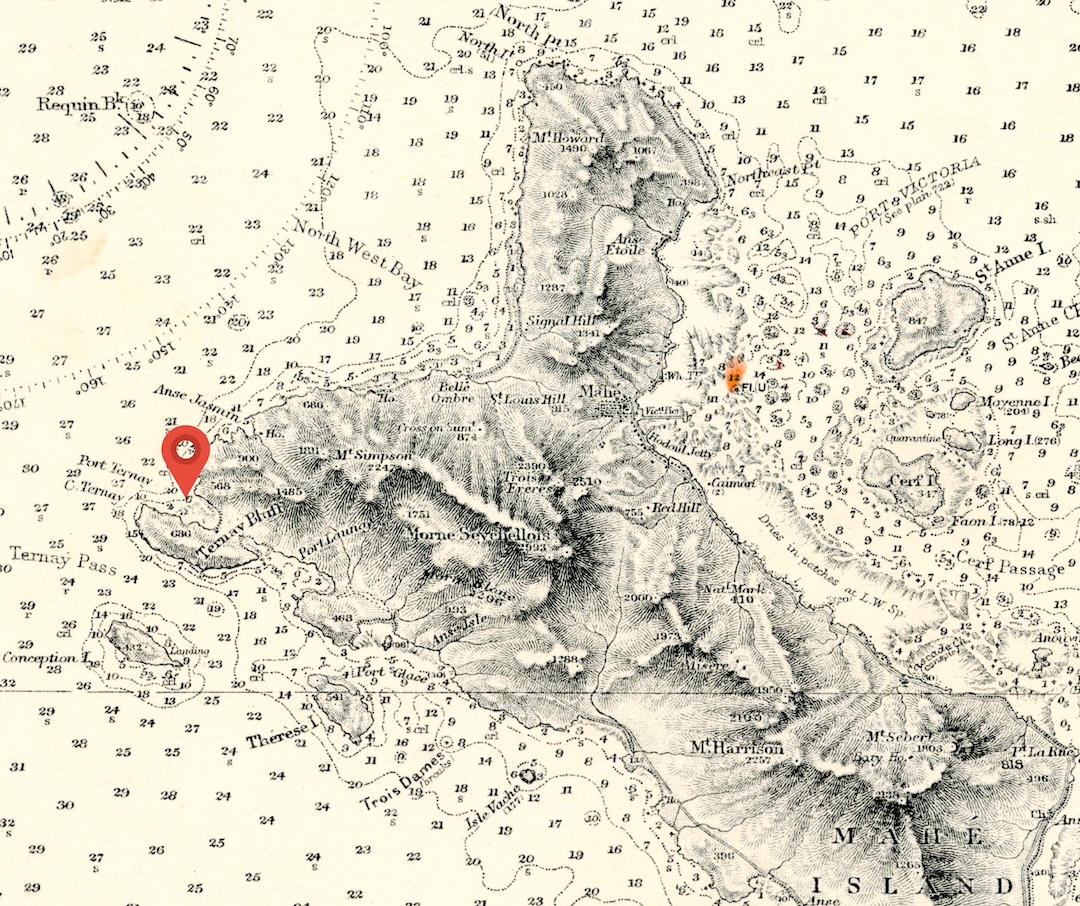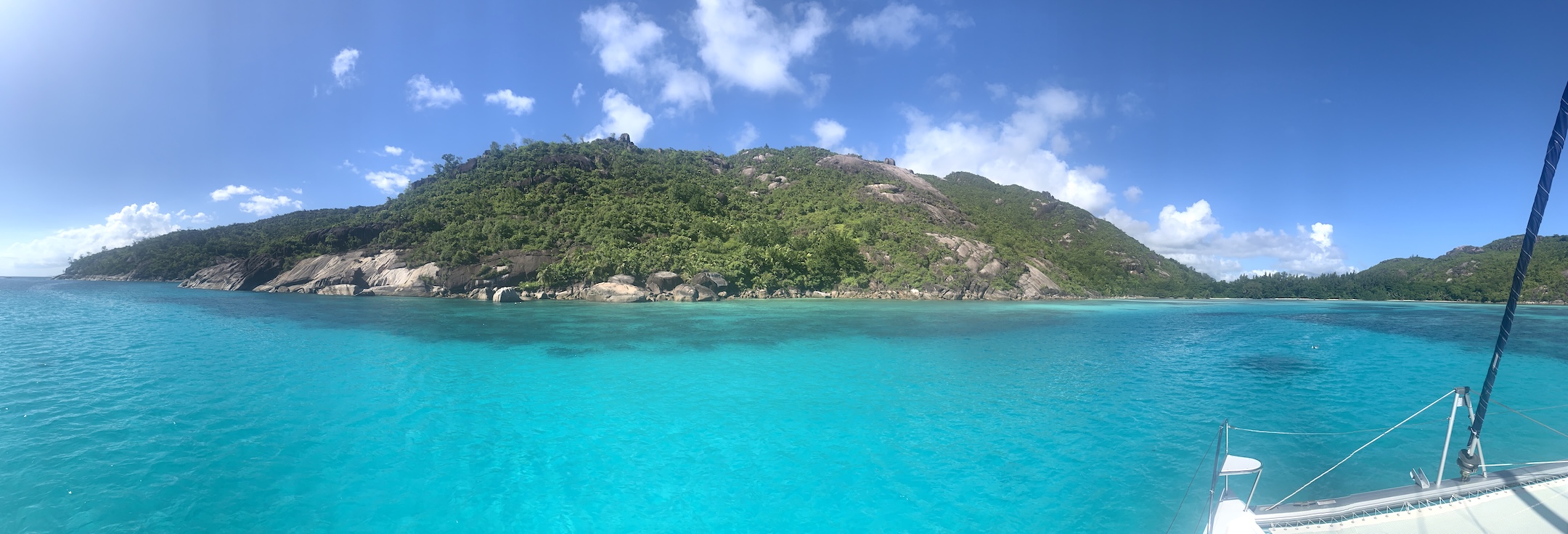Baie Ternay
We awoke to our last full day aboard Takamaka and our preparations for leaving La Digue on one last inter-island journey had a certain sense of deliberateness about them. Provisioning had been pretty accurate, and several last little bits of remaining breakfast items and fruit were finished up.
After weighing anchor, we motored for 10 or 15 minutes away from the jetty at La Digue, then turned our bows into the 12-15 knot breeze blowing from the southeast and set the sails. Our heading for the northern tip of Mahé Island put us on a beam reach, and unlike our passage from Silhouette to Praslin a week prior, there wasn’t much of a swell this time. Takamaka plowed ahead comfortably at 6 or 7 knots, sometimes adding an extra knot of boat speed when the wind built.
It took a little over four hours to cover the 25 miles or so between La Digue and Mahé. We sailed past Beau Vallon, where Colleen and I had sat on the shore nine days earlier watching other catamarans go by. Development on shore became more and more sparse as we continued southeast, running parallel to the northwest-facing shore of the island.

There are several small coves in the area suitable for anchoring one or two boats, and we hadn’t decided on a particular location to spend our last night on the boat, so we moved slowly along, passing by anything that was already occupied. When we came to Baie Ternay, it already had a couple boats anchored in it, but the long stretch of shallow water – well protected from the wind and swells – looked very inviting. Two national park rangers came out in a little power boat and guided us to a spot in a narrow channel of sand where we could drop anchor without damaging any coral. Even though we were in only 2 meters of water, the park ranger advised us to let out 25 meters of chain.

With large coral reefs on either side of the boat, it was the perfect location for the hardcore snorkelers on board, who spent the remainder of the afternoon facedown in the water looking at sting rays, barracudas, bat fish, zebra fish and many others we weren’t able to identify. There were attempts at underwater photography using an iPhone in a special case, but operation proved exceptionally difficult, and the divers had to commit the images to memory instead of the cloud.
There are very few photographs from this afternoon and evening, partly because everyone was simply enjoying the moment, and partly because the things that made it such a special last night couldn’t really be photographed. We pulled together one last meal that turned out quite well considering the odds and ends we had left on board. The sunset, which seems to come and go so quickly in the tropics, felt like it lingered a little longer than usual this time, and when it was finally dark, there was no moon, just the Milky Way and the Southern Cross and The Big Dipper and Orion dominating the sky, bright enough to be seen reflected on the surface of the water. All seven of the crew gathered at the front of the boat to stare up at the sky and look out over the dark water, where occasional mysterious bioluminescent lights would blink on and off.